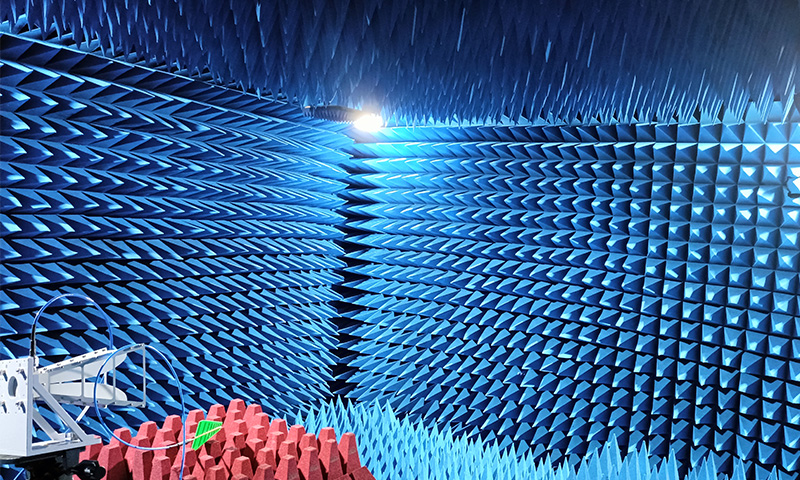Your location: Home Page > RFID Blog | SILION TECH > Unlocking the RFID Spectrum: Understanding LF, HF, and UHF
News and Information
Unlocking the RFID Spectrum: Understanding LF, HF, and UHF
Author:2023-09-15 17:27:52
In today's technologically advanced world, Radio-Frequency Identification (RFID) is changing the way we track and manage items. It's used in various industries like retail, logistics, healthcare, and more. RFID technology comes in different types but today, we're breaking down the three main categories: Low Frequency (LF), High Frequency (HF), and Ultra High Frequency (UHF).

Low Frequency (LF) RFID Modules
Let's start with Low Frequency (LF) RFID modules. These are the early birds of the RFID world. They operate at a frequency range between 125 kHz and 134 kHz. Think of them as the tortoises in the RFID race—slow and steady.
One key characteristic of LF RFID is its shorter read range. Typically, it can read tags from a distance of a few inches to about a foot. This makes it ideal for close-proximity applications like access control systems or pet identification.
LF RFID is also relatively resistant to interference from liquids and metals, making it a preferred choice when dealing with environments where these elements are present.
High Frequency (HF) RFID Modules
Now, let's move on to High Frequency (HF) RFID modules. These operate in the frequency range of 13.56 MHz, and they're like the middle children of the RFID family—striking a balance between LF and UHF in terms of read range and data transfer speed.
HF RFID modules can read tags from a distance of about one to three feet. They are commonly used in applications such as contactless payment cards (like your credit or debit card's chip), library book tracking, and near-field communication (NFC) technology in smartphones.
What sets HF RFID apart is its ability to read multiple tags simultaneously. This feature is handy in scenarios where you need to scan multiple items quickly, like at a store checkout counter.
Ultra High Frequency (UHF) RFID Modules
Now, let's meet the sprinter of the RFID world—Ultra High Frequency (UHF) RFID modules. These operate in the 860 MHz to 960 MHz frequency range and are designed for long-distance and high-speed reading.
UHF RFID can read tags from several feet to several yards away, depending on the power and antenna setup. This makes it perfect for applications like inventory management in warehouses, tracking goods in shipping containers, or even monitoring large crowds at events.
One of the key advantages of UHF RFID is its ability to handle large volumes of tags simultaneously. This makes it incredibly efficient for supply chain and logistics operations.
Key Differences
Now that we've briefly covered each category, let's highlight the key differences between LF, HF, and UHF RFID modules:
Frequency Range and Read Range:
LF operates at 125 kHz to 134 kHz with a shorter read range.
HF operates at 13.56 MHz with a moderate read range.
UHF operates at 860 MHz to 960 MHz with a long read range.
Interference Resistance:
LF is more resistant to interference from liquids and metals.
HF is moderately resistant to interference.
UHF is less resistant to interference but excels in high-speed scanning.
Multi-Tag Reading:
LF can read one tag at a time.
HF can read multiple tags simultaneously.
UHF can read a large number of tags quickly.
Applications:
LF is ideal for access control, pet identification, and basic asset tracking.
HF is used in contactless payment cards, library systems, and NFC technology.
UHF shines in supply chain management, inventory tracking, and large-scale event access control.
Choosing the Right RFID Module
When it comes to selecting the right RFID module, it's crucial to consider your specific application and requirements. Here are some general guidelines:
If you need close-range tracking and resistance to interference, LF RFID might be your choice.
For applications like payment cards or NFC, HF RFID is the go-to option.
If you require long-range and high-speed tracking, especially in logistics or large-scale events, UHF RFID is the way to go.
RFID technology comes in various types, each suited to specific needs. Whether you opt for Low Frequency (LF), High Frequency (HF), or Ultra High Frequency (UHF) RFID modules, the key is to understand your application's requirements and choose the right technology to unlock its full potential. So, next time you encounter RFID technology, you'll know which frequency is right for the task at hand.
Silion Tech is the one of biggest supplier of RFID in your town. Contact us for every kind of RFID devices and It’s solutions.